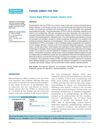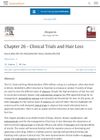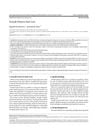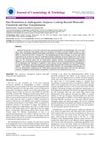Mesotherapy: What Is New?
December 2012
in “
Indian Journal of Dermatology, Venereology and Leprology
”
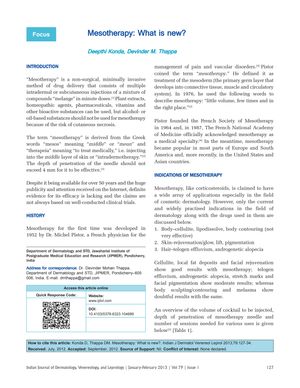
TLDR Mesotherapy shows promise for cellulite and facial rejuvenation but has mixed results for body sculpting and hair loss, with more research needed for safety and effectiveness.
The document from January 2013 reviews mesotherapy, a procedure involving injections into the skin's middle layer for cosmetic and therapeutic purposes. It highlights its use for conditions like cellulite, local fat deposits, facial rejuvenation, and hair loss, including telogen effluvium and androgenetic alopecia. While some treatments like cellulite and facial rejuvenation show good results, the effectiveness for body sculpting and melasma is questionable. A study by Park et al. found mesotherapy ineffective for body contouring, while Moftah et al. reported its effectiveness in treating female pattern hair loss with dutasteride. However, mesotherapy has also been associated with causing alopecia. The document notes the potential of platelet-rich plasma and peptides in mesotherapy for hair growth and skin rejuvenation but calls for more research to ensure safety. It also explores the use of growth factors and stem cells in mesotherapy. Despite its popularity, the document stresses the need for standardized guidelines and safety data, as the mode of action for many products used in mesotherapy remains unclear.

